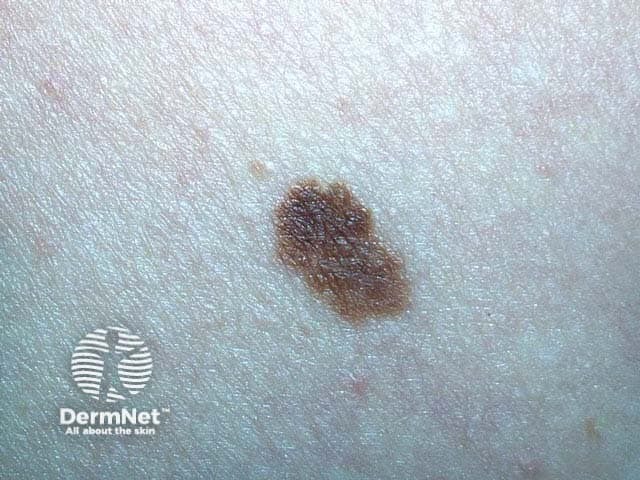Main menu
Common skin conditions

NEWS
Join DermNet PRO
Read more
Quick links
This quiz will test your knowledge of benign melanocytic naevi.
Melanocytic naevi may be congenital or acquired. Melanocytes are normally separated from each other along the basal layer of the epidermis, but in naevi they form nests in contact with each other within the epidermis and/or dermis. They may be found on any cutaneous or mucosal site. Groups of benign naevus cells are sometimes also found in lymph nodes, where they are known as ‘rests’.
For each of the twelve cases, study the image(s) and then answer the questions. You can click on the image to view a larger version if required.
Each case should take approximately 2 minutes to complete. There is a list of suggested further reading material at the end of the quiz.
When you finish the quiz, you can download a certificate.

What is this skin lesion?
Junctional naevus (benign acquired melanocytic naevus).
What are its clinical features?
Acquired melanocytic naevi (moles) affect almost everybody but are more prevalent in those with light coloured skin, especially in those with greater exposure to ultraviolet radiation. They are most numerous in young adults and tend to involute inconspicuously in the elderly.
Although most often small (under 6 mm diameter) and uniform in colour, normal moles may be large (>1 cm), and coloured pink, tan, brown or black. Benign naevi may quite commonly have a darker periphery, as a complete ring or partial eccentric 'eclipse', a darker centre with fading periphery or a speckled appearance. Sometimes there are concentric rings of increased pigmentation.
Junctional naevi are flat, as melanocyte nests are found at the epidermal-dermal junction.